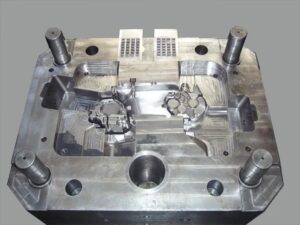Die casting principle
 Since the 1920s, many people have done more in-depth research on the pressure rotation principle, and there have also been a series of relevant theoretical systems named after the proposer. These theoretical systems are mainly Barton theory, Brandt theory and so on.
Since the 1920s, many people have done more in-depth research on the pressure rotation principle, and there have also been a series of relevant theoretical systems named after the proposer. These theoretical systems are mainly Barton theory, Brandt theory and so on.
In the process of die casting, metal filling is an extremely complex comprehensive process including mechanics, hydrodynamics and thermodynamics. It is closely related to the casting structure, injection speed, pressure, die temperature, liquid metal temperature, liquid metal viscosity, shape and size of gating system, etc
What is Die Casting?
When the superalloy is hydraulically put into the pouring system of the brocade mold with low temperature, various forms of heat exchange will occur between the liquid metal and the mold: the liquid metal loses heat and the temperature decreases; The mold gets heat and the temperature increases. When the temperature of molten metal decreases, the surface tension increases, the viscosity increases and the fluidity decreases When they exceed a certain limit, casting defects such as unclear outline, lack of meat, cold shut, crack and slag inclusion will occur In addition, when liquid metal fills the cavity, it is also affected by various resistances, such as the gas resistance in the cavity and the resistance when it touches the mold wall and core.
Therefore, the filling shape of liquid metal plays a decisive role in the quality of pressure transmission parts. Therefore, the law of filling shape of liquid metal must be mastered Understand the filling characteristics in order to correctly design the gating system and obtain high-quality parts.
Die Casting Process
The principle of die casting is mainly based on H ・ K Barton theory. The theory holds that the process of filling the mold with liquid metal is a hybrid process including hydrodynamics and thermodynamics, and the filling process can be divided into three stages.

In the first stage । the molten metal enters Europe in a shadow close to the Russian surface of the inner gate । first hit the whip on the opposite side, expand around the mold wall and then return to the gate, and gradually form a shell (thin shell) on the mold wall through which the molten metal flows
The second stage: the incoming metal is deposited on the surface of the thin shell for filling The accumulated metal of disturbance expands and merges around the core formed in the first stage here. The rapidly flowing metal upper layer extends to the leading edge and surrounds the liquid flow ® When the metal flow stops, it has a considerable force to hit the nasal surface
The center of rotation is in this layer, and the movement of its solid cloth is consistent with the average velocity in the liquid flow The metal in this room has the smallest part that moves in the direction of liquid flow. It rotates around this center and gradually brings the metal from the upper layer to the lower layer, so it generally maintains the skin thickness of liquid flow until it is filled The skin initially formed in the first stage is at or near the solid line in the second stage.
The third stage: after the metal liquid completely fills the mold wall, the mold cavity, gating system and pressure plug are a closed hydraulic system. In this system, the pressure is equal everywhere, and the injection force makes the liquid metal reinvigorate through the center of W part.
Value-added services






